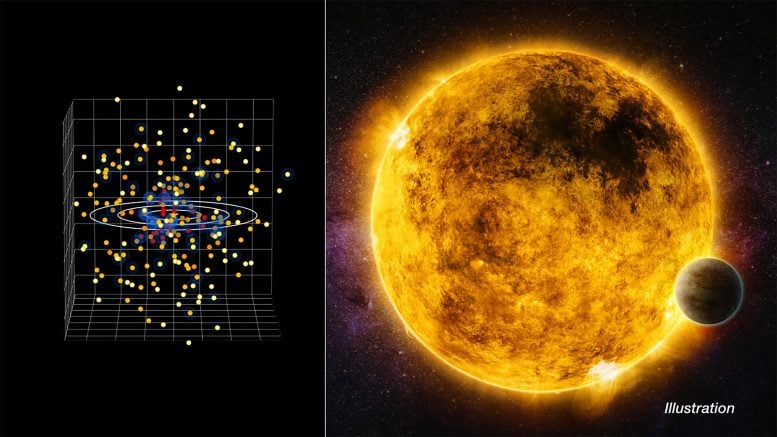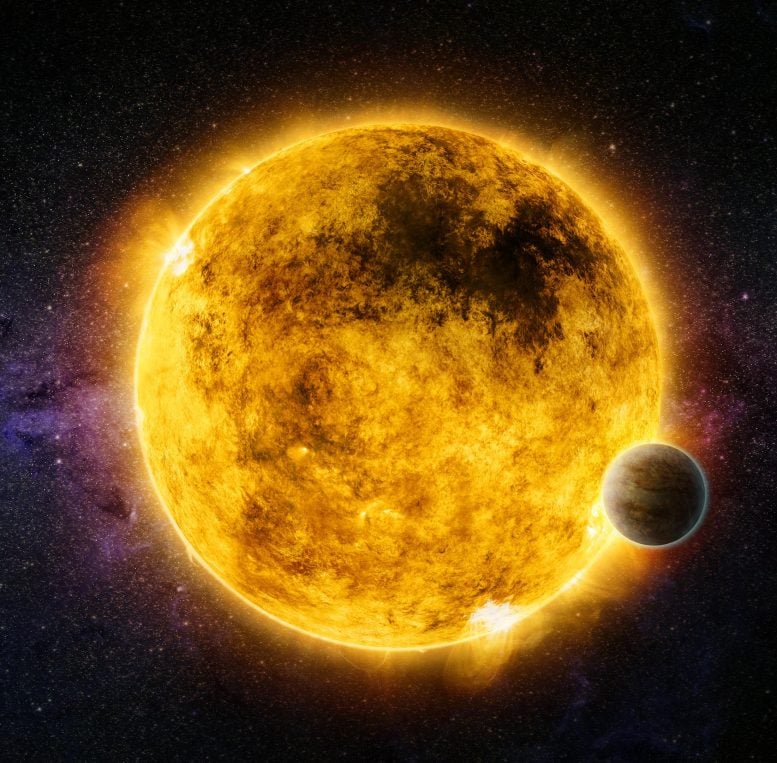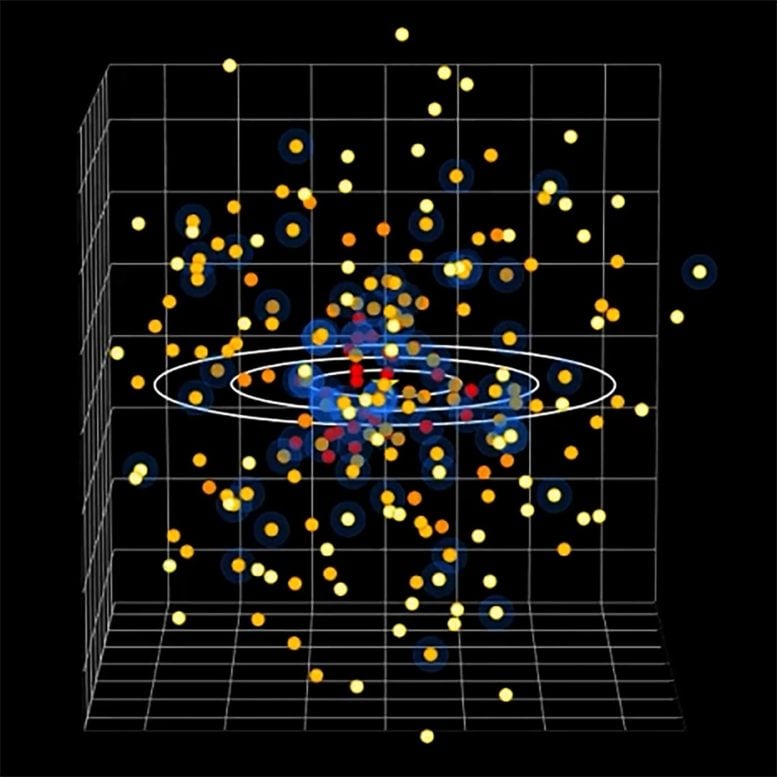
Through a 3D star map, researchers analyze how nearby stars might impact their planets’ atmospheres with X-rays, helping guide the search for habitable exoplanets by future telescopes.
- X-ray observations of nearby stars are helping astronomers identify the best targets to search for exoplanets with conditions suitable for life.
- Such planets could be directly imaged in searches with a future generation of telescopes.
- Harmful radiation from a star in the form of X-rays and ultraviolet could damage or even destroy a planet’s atmosphere.
- Researchers used NASA’s Chandra X-ray Observatory and ESA’s XMM-Newton to look at 57 exoplanets.
On the left of the image above, a graphic shows a three-dimensional map of stars near the Sun. (See detailed view below.) These stars are close enough that they could be prime targets for direct imaging searches for planets using future telescopes. The blue haloes represent stars that have been observed with NASA’s Chandra X-ray Observatory and ESA’s XMM-Newton. The yellow star at the center of this diagram represents the position of the Sun. The concentric rings show distances of 5, 10, and 15 parsecs (one parsec is equivalent to roughly 3.2 light-years).
Astronomers are using these X-ray data to determine how habitable exoplanets may be based on whether they receive lethal radiation from the stars they orbit. This type of research will help guide observations with the next generation of telescopes aiming to make the first images of planets like Earth.
Researchers examined stars that are close enough to Earth that telescopes set to begin operating in the next decade or two — including the Habitable Worlds Observatory in space and Extremely Large Telescopes on the ground — could take images of planets in the stars’ so-called habitable zones. This term defines orbits where the planets could have liquid water on their surfaces.

There are several factors influencing what could make a planet suitable for life as we know it. One of those factors is the amount of harmful X-rays and ultraviolet light they receive, which can damage or even strip away the planet’s atmosphere.
Based on X-ray observations of some of these stars using data from Chandra and XMM-Newton, the research team examined which stars could have hospitable conditions on orbiting planets for life to form and prosper. They studied how bright the stars are in X-rays, how energetic the X-rays are, and how much and how quickly they change in X-ray output, for example, due to flares. Brighter and more energetic X-rays can cause more damage to the atmospheres of orbiting planets.
The researchers used almost 10 days of Chandra observations and about 26 days of XMM observations, available in archives, to examine the X-ray behavior of 57 nearby stars, some of them with known planets. Most of these are giant planets like Jupiter, Saturn, or Neptune, while only a handful of planets or planet candidates could be less than about twice as massive as Earth.

These results were presented at the 244th meeting of the American Astronomical Society meeting in Madison, Wisconsin, by Breanna Binder (California State Polytechnic University in Pomona).
NASA’s Marshall Space Flight Center manages the Chandra program. The Smithsonian Astrophysical Observatory’s Chandra X-ray Center controls science from Cambridge, Massachusetts and flight operations from Burlington, Massachusetts.
1 Comment
So, as always, I find this info useless because the paper gives NO info about which perticular Stars have high x-rays…